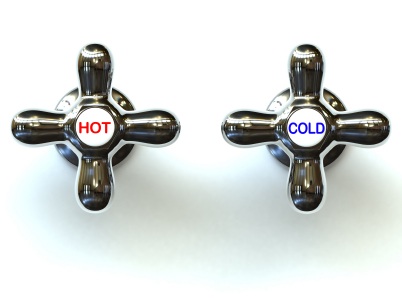In my nosework classes, I talk more and more about how important handler mechanics are. Mechanics include your handling (position, movement, leash), timing, markers/cues, and delivery of reinforcement (having them ready, not dropping treats). This is very ingrained in my handling from years in other dog sports and applies to all dog sport training.
In Amy Cook’s Geek Out webinar, she talked about how “everything can be a marker”. We easily give off unintentional markers – a tell – when our dog is getting close to odor. We face the hide, start to move in, reach for our treats, etc. It’s the #1 handling issue that I see. Amy perfectly described it as “just your decision … that you liked the behavior you just saw, ‘oh that’s it, I identify with that in my head, that’s what I was going for’ … the fact that your brain registered that it was good can be your dog’s marker because the second you do that you had some kind of tell”. Specifically with scent sports – nose/scent work, tracking, barnhunt – we can so easily influence our dogs as they search/track odor by giving off many “tells” that they are getting warmer or colder!
 When teaching a new behavior, it’s important we are neutral in our body language so that anything else you do isn’t interpreted by the learner as marking/cuing a behavior (how many of you lean in when cuing your dog to “down”, or hold your hand a certain way when cuing “sit” and then wonder why they can’t perform based only off the verbal cue?).
When teaching a new behavior, it’s important we are neutral in our body language so that anything else you do isn’t interpreted by the learner as marking/cuing a behavior (how many of you lean in when cuing your dog to “down”, or hold your hand a certain way when cuing “sit” and then wonder why they can’t perform based only off the verbal cue?).
When I intro odor, I’m very still – I’m not moving. I communicate to my dog “yes” and then move in to feed. The same applies in a search with your timing/handling before calling your dog’s indication at source. Think about what you intend your “tell” to be to your dog. If it’s a verbal/audible marker, then that needs to be your primary tell. Some handlers don’t use a verbal marker and that’s ok. Their handling system supports a signal or movement in to tell their dog they were good and that reinforcement is coming.
Sometimes it’s suggested that handlers keep moving during a nosework search – so that we don’t “tell” anything if we stop. I’ve been known to advise that too, but often it’s a band-aid and is usually fixing a foundation problem of inadvertently giving our dogs clues before they find the hide. Dogs learn to read our body language better than ANYTHING else. In many cases, it is a side effect of not proofing against handler cues. So they notice when we stop if we always stop near hides. But we don’t have to always move. I don’t. I move, I stop, I walk away, I back up. I reach into my pocket in cold areas, I follow them away from hides. I usually stop when they are slowing up and showing interest in a location. I move when they move. I turn when they turn. I stand/stop when the search area is small and need to give them space. I move if my dog needs some support to cover an area, etc.
When our dogs are learning to search/searching they should work independent of our movement. If we tend to face the hide, walk in when they are going to hide, stand by hide, show them the hide, etc, they can become handler focused and start to be reinforced by our actions before we want to start the “reinforcement event”. Our movement in, our reaching for treats are all reinforcing to our dogs! A helpful tip is to think of how you wait for the judge/instructor/helper to confirm your alert before you ever move in or “decide” your dog is right. Your “alert” call is to get confirmation before you truly mark or cue any behavior.